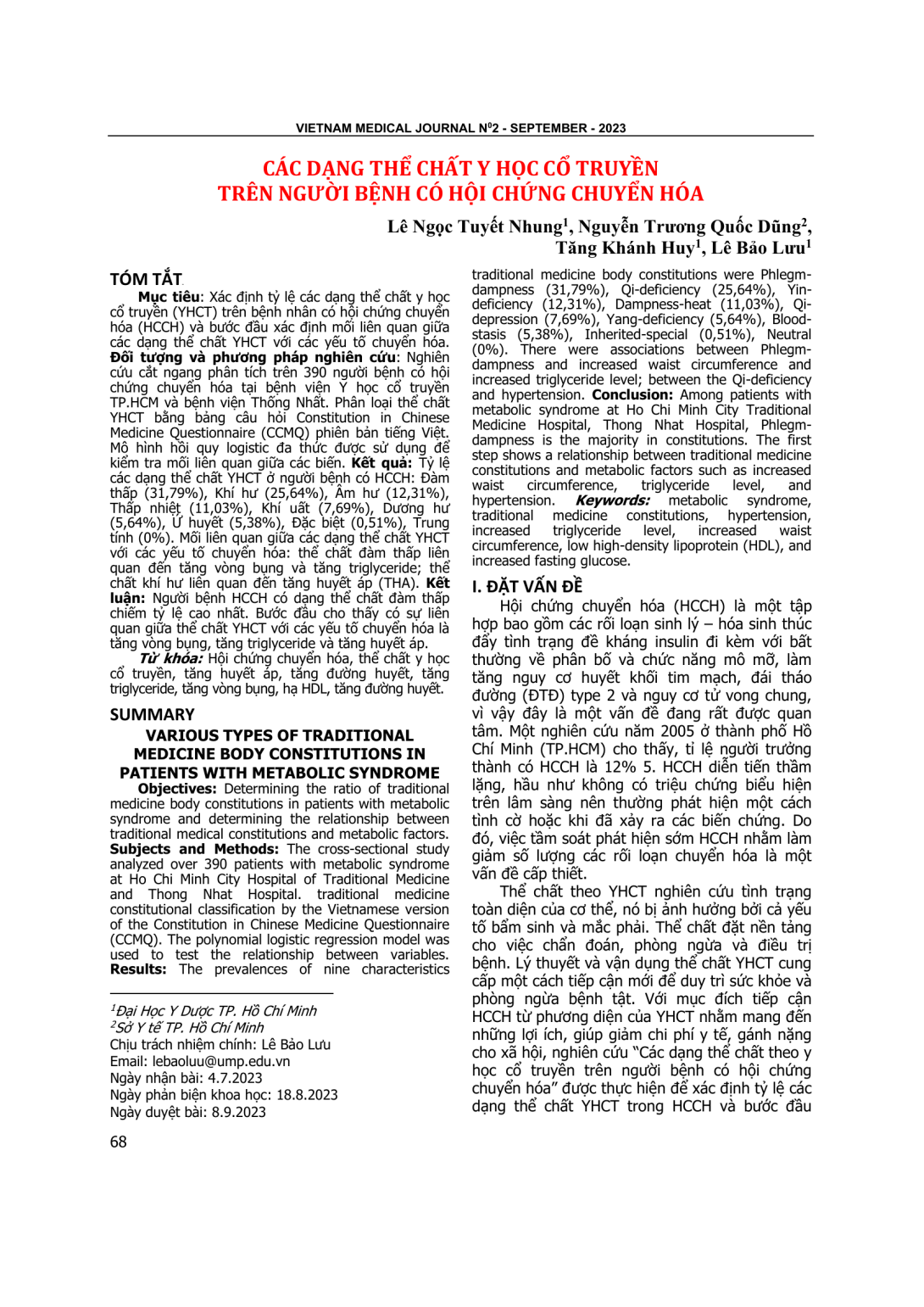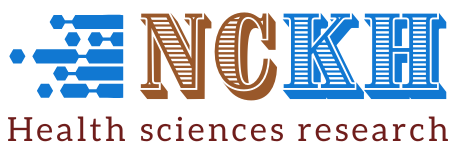
Xác định tỷ lệ các dạng thể chất y học cổ truyền (YHCT) trên bệnh nhân có hội chứng chuyển hóa (HCCH) và bước đầu xác định mối liên quan giữa các dạng thể chất YHCT với các yếu tố chuyển hóa. Đối tượng và phương pháp nghiên cứu: Nghiên cứu cắt ngang phân tích trên 390 người bệnh có hội chứng chuyển hóa tại bệnh viện Y học cổ truyền TP.HCM và bệnh viện Thống Nhất. Phân loại thể chất YHCT bằng bảng câu hỏi Constitution in Chinese Medicine Questionnaire (CCMQ) phiên bản tiếng Việt. Mô hình hồi quy logistic đa thức được sử dụng để kiểm tra mối liên quan giữa các biến. Kết quả: Tỷ lệ các dạng thể chất YHCT ở người bệnh có HCCH: Đàm thấp (31,79%), Khí hư (25,64%), Âm hư (12,31%), Thấp nhiệt (11,03%), Khí uất (7,69%), Dương hư (5,64%), Ứ huyết (5,38%), Đặc biệt (0,51%), Trung tính (0%). Mối liên quan giữa các dạng thể chất YHCT với các yếu tố chuyển hóa: thể chất đàm thấp liên quan đến tăng vòng bụng và tăng triglyceride; thể chất khí hư liên quan đến tăng huyết áp (THA). Kết luận: Người bệnh HCCH có dạng thể chất đàm thấp chiếm tỷ lệ cao nhất. Bước đầu cho thấy có sự liên quan giữa thể chất YHCT với các yếu tố chuyển hóa là tăng vòng bụng, tăng triglyceride và tăng huyết áp.
Determining the ratio of traditional medicine body constitutions in patients with metabolic syndrome and determining the relationship between traditional medical constitutions and metabolic factors. Subjects and Methods: The cross-sectional study analyzed over 390 patients with metabolic syndrome at Ho Chi Minh City Hospital of Traditional Medicine and Thong Nhat Hospital. traditional medicine constitutional classification by the Vietnamese version of the Constitution in Chinese Medicine Questionnaire (CCMQ). The polynomial logistic regression model was used to test the relationship between variables. Results: The prevalences of nine characteristics traditional medicine body constitutions were Phlegm-dampness (31,79%), Qi-deficiency (25,64%), Yin-deficiency (12,31%), Dampness-heat (11,03%), Qi-depression (7,69%), Yang-deficiency (5,64%), Blood-stasis (5,38%), Inherited-special (0,51%), Neutral (0%). There were associations between Phlegm-dampness and increased waist circumference and increased triglyceride level; between the Qi-deficiency and hypertension. Conclusion: Among patients with metabolic syndrome at Ho Chi Minh City Traditional Medicine Hospital, Thong Nhat Hospital, Phlegm-dampness is the majority in constitutions. The first step shows a relationship between traditional medicine constitutions and metabolic factors such as increased waist circumference, triglyceride level, and hypertension.
- Đăng nhập để gửi ý kiến
